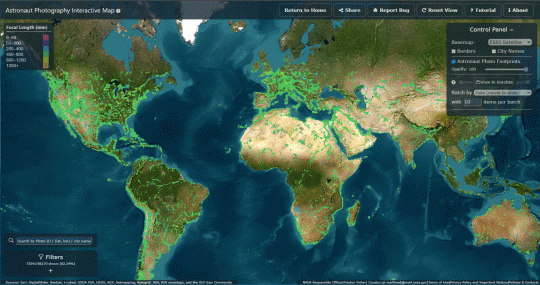ISS062-E-85589
| NASA Photo ID | ISS062-E-85589 |
| Focal Length | 170mm |
| Date taken | 2020.03.07 |
| Time taken | 18:56:04 GMT |
Country or Geographic Name: | ARGENTINA |
Features: | LAGO MUSTERS, LAGO COLHUE HUAPI, RADA TILLY, COMODORO RIVADAVIA, CHUBUT PROVINCE |
| Features Found Using Machine Learning: | |
Cloud Cover Percentage: | 25 (11-25)% |
Sun Elevation Angle: | 40° |
Sun Azimuth: | 323° |
Camera: | Nikon D5 Electronic Still Camera |
Focal Length: | 170mm |
Camera Tilt: | High Oblique |
Format: | 5568E: 5568 x 3712 pixel CMOS sensor, 35.9 x 23.9 mm, total pixels: 21.33 million, Nikon FX format |
Film Exposure: | |
| Additional Information | |
| Width | Height | Annotated | Cropped | Purpose | Links |
|---|---|---|---|---|---|
| 720 pixels | 480 pixels | Yes | No | NASA's Earth Observatory web site | Download Image |
| 5568 pixels | 3712 pixels | No | No | Download Image | |
| 640 pixels | 427 pixels | No | No | Download Image |
A surging dust storm and trailing dust cloud captured an astronau's attention as the International Space Station (ISS) was passing over South America. Dust storms are common in Patagonia and familiar for people in Comodoro Rivadavia, a coastal city in southern Argentina.
The primary source of dust is Lago Colhue Huapi, a shallow lake adjacent to the much deeper Lago Musters. During Patagonia's dry season, the water levels of Colhue Huapi drop significantly due to evaporation, leaving loose silt exposed at the surface. In this photograph, the lake is almost entirely obscured by dust and clouds. At the western margin of the storm, dust lifted off from the ground in the form of dust streamers, which were aligned with the wind direction. These surface dust features are also observed on Mars.
This striking weather event carried dust more than 120 kilometers (80 miles) east over land and eventually out over Golfo de San Jorge and the Atlantic Ocean. Many studies have shown that such dust activity is a major source of nutrients in the South Atlantic.
The conditions promoting dust storms in the Patagonian desert tend to arise late in the afternoon, after most polar-orbiting satellites have passed overhead (typically at the same local time every day). The orbit of the ISS allows astronauts to view areas of Earth at different times of day, providing unique views of such natural phenomena.




